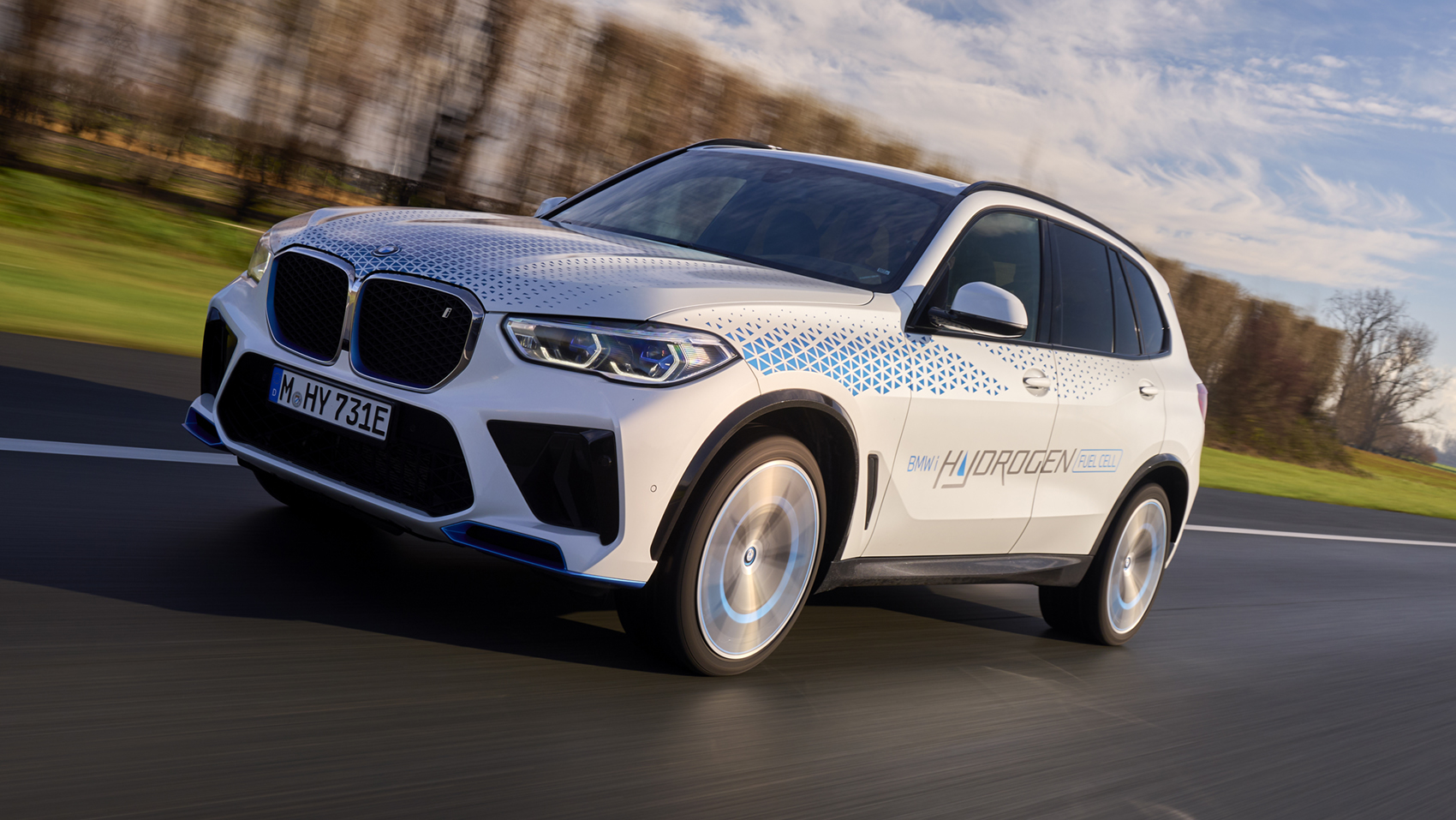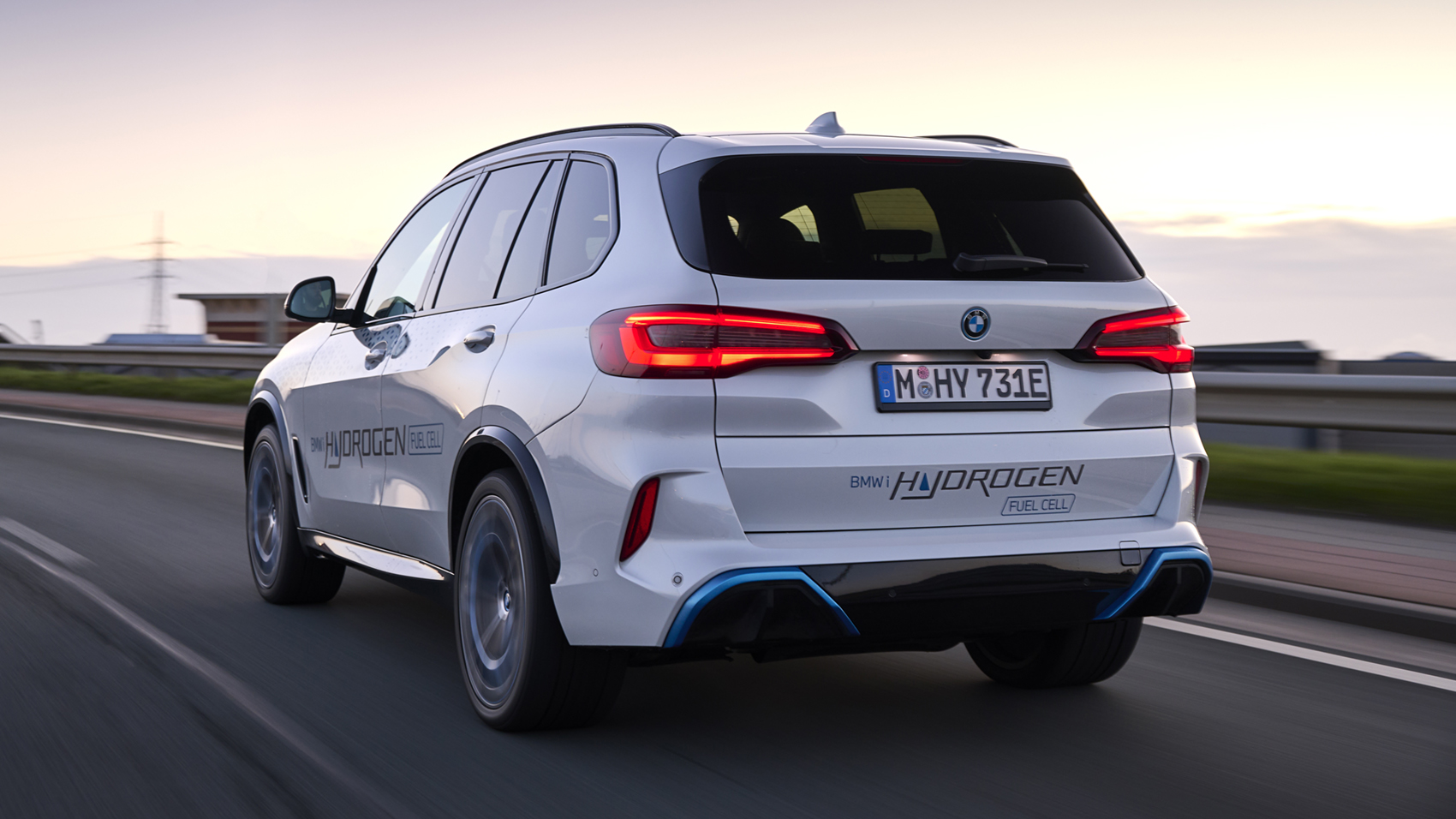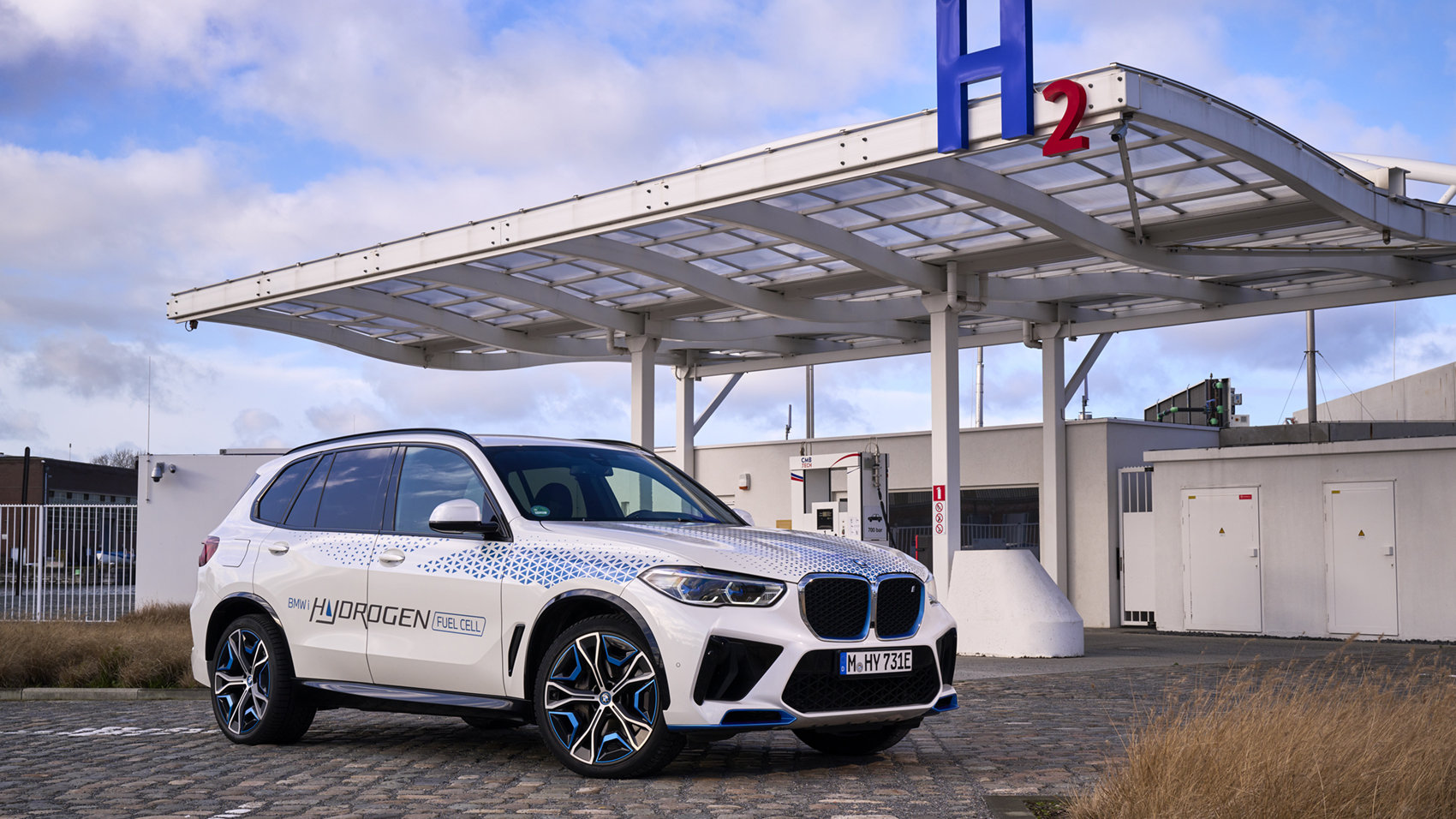
Is this the future?
It would seem so. This is the BMW iX5 Hydrogen, one of an admittedly sizeable group of just under 100 prototype vehicles that have been dispatched to the four corners of the globe and all sorts of places in-between to test out BMW’s latest hydrogen tech.
The future doesn’t look very exciting does it...
The Jetsons might have overpromised somewhat on the precise level of flying cars we’d be zipping about in by this point of society’s advancement, but the BMW is actually quite advanced if you scratch below the rather bloated midsize luxury SUV exterior. Tech that’s hinted at by the natty blue accents and absolutely given away by the massive stickers down the side of the car.
So what’s new on the iX5 Hydrogen?
What BMW did was take some factory fresh plug-in hybrid X5s down to the folks in the chop shop (specialist prototype department) and have them torn apart and then put back together with hydrogen fuel cells inside. After that there was space left where the battery lived and along the transmission tunnel to put in pressurised hydrogen tanks (enough for 6kg of the stuff, which means 313 miles of WLTP range).
Hydrogen gas and oxygen from the atmosphere mix around the fancy membranes of the fuel cell, causing a reaction that produces electricity and water. What a delight.
The other new thing is the high capacity charge/discharge battery: BMW is a bit coy on the tech, but the car functions like a normal hybrid car (think Toyota Prius etc) with brake regen and a bit of charge from the fuel cell. Normally the car tickles along with 168bhp from the fuel cell, but is helped by a 228bhp boost from the battery for an overall output of 396bhp. Obviously you don’t need that all the time, but the car will manage a 0–62mph run in under six seconds.
Does it drive differently?
That’s the headline thing here, actually – it drives just like an electric car; there’s nothing particularly different about it. The X5 is a lardy beast on paper and can feel a little wallowy at low speeds, but it all tightens up on the move and it really disguises its weight well. BMW says that it has kept the weight of the fuel cell iX5 comparable with the X5 PHEV donor car, so it’s business as usual.
That is, apart from one important psychological difference that bodes well for the future of the fuel. You get to enjoy the full perked up performance of the electric powertrain without the niggling worry of range anxiety at the back of your mind. The hydrogen isn’t affected by the cold either, so you get your 313 miles in winter too. Minus a bit for the heating, but the car scavenges some from the fuel cell to keep things toasty.
But is hydrogen really going to happen?
BMW reckons it will – these prototypes haven’t been made with small change found down the back of a sofa in an office in Munich. The firm is adamant that its hydrogen efforts are not intended to downplay electric, either, but rather to complement it. There are certain industries where batteries just won’t work, it says, and we’ll start to see hydrogen deployed on the roads in things like buses and trucks before the tech becomes widespread in passenger cars.
Creating clean hydrogen at scale remains a challenge, but the dream is having a load of solar panels working their hardest in somewhere like the Middle East, creating hydrogen that can be shipped around the world. It’s quite easily mixed with other things, so the tech whizzes behind the iX5 can foresee a scenario where excess renewable power in Scotland can be used to create hydrogen that’s sent across the rest of the UK in existing natural gas pipelines. Bonkers.
Top Gear
Newsletter
Thank you for subscribing to our newsletter. Look out for your regular round-up of news, reviews and offers in your inbox.
Get all the latest news, reviews and exclusives, direct to your inbox.
So when can I buy one of these?
Sadly you won’t ever be able to buy one of these, but provided everything goes well with the trials (and occasional tribulations), BMW’s hydrogen team is already working internally on development of a future production model that will almost certainly be the next-generation X5. But they won’t actually say that.
Refuelling will be an issue at the moment – there are already 105 hydrogen stations in Germany (compared with 12 in the UK), and the European Union has mandated a hydrogen station every 125 miles along the motorways by 2030, as well as in every town or city over 100,000 inhabitants. There are companies investing in UK infrastructure, but it’s a chicken and egg situation. It’s likely that commercial filling stations will be more widespread before consumer ones.
Featured

Trending this week
- Car Review
BMW iX3






